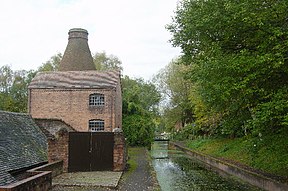| Shropshire Canal | |
|---|---|
 The Shropshire Canal at Coalport | |
| Specifications | |
| Locks | 0 (3 inclined planes) |
| Status | defunct |
| History | |
| Principal engineer | William Reynolds |
| Date of act | 1788 |
| Date completed | 1791 |
| Date closed | 1912 |
| Geography | |
| Start point | Old Yard Junction |
| End point | Coalport |
| Connects to | Donnington Wood Canal, Ketley Canal, Wombridge Canal |
Shropshire Tub Boat Canals | |||||||||||||||||||||||||||||||||||||||||||||||||||||||||||||||||||||||||||||||||||||||||||||||||||||||||||||||||||||||||||||||||||||||||||||||||||||||||||||||||
|---|---|---|---|---|---|---|---|---|---|---|---|---|---|---|---|---|---|---|---|---|---|---|---|---|---|---|---|---|---|---|---|---|---|---|---|---|---|---|---|---|---|---|---|---|---|---|---|---|---|---|---|---|---|---|---|---|---|---|---|---|---|---|---|---|---|---|---|---|---|---|---|---|---|---|---|---|---|---|---|---|---|---|---|---|---|---|---|---|---|---|---|---|---|---|---|---|---|---|---|---|---|---|---|---|---|---|---|---|---|---|---|---|---|---|---|---|---|---|---|---|---|---|---|---|---|---|---|---|---|---|---|---|---|---|---|---|---|---|---|---|---|---|---|---|---|---|---|---|---|---|---|---|---|---|---|---|---|---|---|---|---|
| |||||||||||||||||||||||||||||||||||||||||||||||||||||||||||||||||||||||||||||||||||||||||||||||||||||||||||||||||||||||||||||||||||||||||||||||||||||||||||||||||
The Shropshire Canal was a tub boat canal built to supply coal, ore and limestone to the industrial region of east Shropshire, England, that adjoined the River Severn at Coalbrookdale. It ran from a junction with the Donnington Wood Canal ascending the 316 yard long Wrockwardine Wood inclined plane to its summit level, it made a junction with the older Ketley Canal and at Southall Bank the Coalbrookdale (Horsehay) branch went to Brierly Hill above Coalbrookdale; the main line descended via the 600 yard long Windmill Incline and the 350 yard long Hay Inclined Plane to Coalport on the River Severn. The short section of the Shropshire Canal from the base of the Hay Inclined Plane to its junction with the River Severn is sometimes referred to as the Coalport Canal.
Construction of the canal was completed in 1792, and it operated successfully until the 1830s. The construction and operation of the Hay inclined plane was documented by two Prussian engineers who visited it in 1826 or 1827. In the 1840s it was leased by the Shropshire Union Canal, but was suffering from subsidence by the 1850s. Following nine breaches in 1855 and 1856, it was purchased by the London and North Western Railway company, owners of the Shropshire Union, in 1857 and most of it was closed in 1858. A railway was laid along parts of it, but a small section at the southern end remained in operation until 1912, and was not formally abandoned until 1944. The Hay inclined plane and a section of the canal now form part of the Ironbridge Gorge Museum Trust.